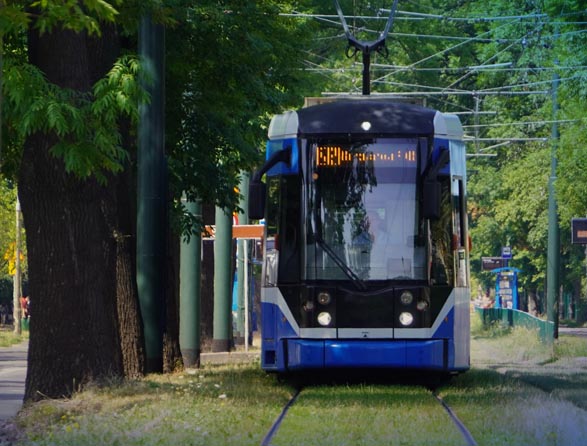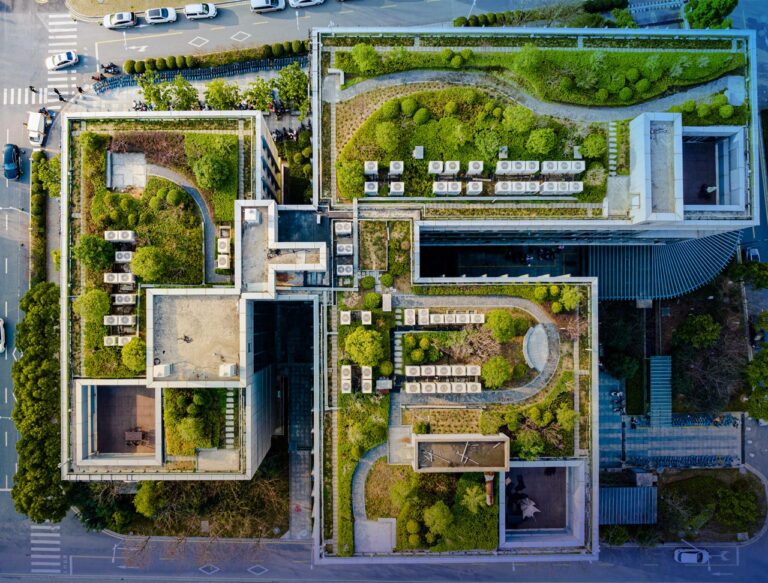In early January of this year, a powerful earthquake struck central Japan, destroying buildings, causing power outages that disrupted transportation and communication and sparking fires that consumed part of an urban center with a population of 27,000. Preliminary reports put the death toll at 55.
In India, extreme heat waves, with temperatures reaching up to 115 degrees Fahrenheit, have caused the deaths of thousands of people. The problem is particularly deadly in cities, where “urban heat islands” of densely-packed construction raise the temperature, trap air pollution and hamper air circulation.
From fires and floods to heat waves and earthquakes, the impact of extreme weather and other natural disasters is felt around the world. When bad weather strikes, it can lead to a variety of negative outcomes for the impacted community, impacting local economies, businesses, infrastructure, schools and hospitals and even the ability to provide basic services.
Climate change and its consequences are changing the way people live and new approaches to urban planning that prioritize sustainability and climate-resilient infrastructure have become necessary. Fortunately, many of the world’s cities are already responding to the impact of climate change, creating a future where urban space puts the needs of people first while avoiding further environmental degradation.

What is climate-resilient infrastructure?
According to The Organization for European Economic Cooperation and Development (OECD), climate-resilient infrastructure is “planned, designed, built and operated to anticipate, prepare for and adapt to changing climate conditions.” One way to do this is by building infrastructure in a way that is highly respectful of the natural world, or establishing “symbiosis” – that is, countering the impacts of human activity by designing for nature as well as for people, generating multiple benefits.
Elements of climate-resilient infrastructure that are also symbiotic include green infrastructure, which uses natural features like rain gardens to manage stormwater, and green roofs and walls to reduce urban heat islands and encourage wildlife habitats. Other examples include:
- Bike lanes and pedestrian walkways to reduce air pollution and alleviate traffic congestion
- Urban agriculture to alleviate food deserts
- Smart growth to make cities walkable and mass-transit oriented
- Renewable energy such as solar and wind powers to reduce greenhouse gasses and improve air quality
Examples of climate-resilient infrastructure
With rising pressure around the world to build more sustainable cities, there are already many examples of climate-resilient infrastructure that we can draw inspiration from. Below are some examples.
The Pixel Building in Melbourne, Australia is the world’s first office building with no carbon dioxide emissions. Described as “the multi-colored building with the green heart,” it’s people-pleasing colorful translucent recycled panels that cover the building structure keep in heat to enhance energy efficiency. The rooftop houses wind turbines and solar panels and a rainwater collection and filtering system that provides water used in the building’s plumbing and refrigeration systems.
Another example is Bahrain’s World Trade Center, which harnesses the winds off the Persian Gulf to generate electricity via turbines set between dramatic towers rising above the capital city of Manama, designed to provide up to 15% of the center’s energy needs.
The Amager Bakke waste-to-energy plant, completed in 2017, burns 400,000 tons of municipal solid waste annually, providing electricity and heat for 150,000 homes in Copenhagen, Denmark. It also doubles as a recreation and environmental education center, sporting a sloped roof that serves as a year-round artificial ski slope, hiking slope and features the world’s tallest climbing wall, all open to the public.
The Bosco Verticale in Milan, Italy, is an apartment complex that also functions as a vertical forest, with more than 2,000 tree species on terraces along the buildings’ façade to increase the biodiversity of plant and animal species in the region through “vertical greening.”
And the International Hall in Fukuoka, Japan, designed by Emilio Ambasz, an internationally-renowned pioneer of green architecture, features a mountain-like public park with 15 garden terraces where plantings moderate the building’s internal temperature, and support local wildlife.
The Vancouver Convention Centre West in downtown Vancouver, Canada, has a hive of European honeybees installed on the roof to pollinate the more than 400,000 indigenous rooftop plants and grasses, which in turn, reduce heat in the summer and retain it in winter. The complex also houses a restored marine habitat built into the foundation of the building, and recycles gray and black water for toilet flushing and rooftop irrigation.
Using virtual twin technology to build resilient infrastructure
As urban centers plan for a sustainable future, developments in technology will allow cities to improve the health of the people who live there by simulating and testing scenarios to visualize and predict not only potential natural disasters and an infrastructure’s ability to withstand them, but impacts of disease transmission and air quality on citizens’ health.
3D modeling to protect against natural disasters
Pacific Consultants of Japan adopted the Dassault Systemes 3DEXPERIENCE platform to design infrastructure to better protect that country’s population from natural disasters including typhoons, earthquakes, tsunamis, flooding and landslides. The company used 3D modeling in CATIA to come up with new infrastructure designs and find effective solutions faster for calculating volumes of soil sediment for dam design, which allows the company to control erosion, reduce project costs and find creative ways to solve critical problems to improve public safety.
Modeling ventilation systems in hospitals
In Paris, Saint-Lous Hospital—APHP is improving the health of its immunocompromised patients by modeling its ventilation system on Dassault Systemès virtual twin platform to prevent respiratory transmission of viruses that could be dangerous to fragile patients undergoing kidney dialysis treatment. By simulating particle contamination to visualize and predict the transmission of viral particles through the air, engineers were able to see how a patient at one end of a room cold contaminate a patient at the other end of the room, and improved air flow and filtration in response.
Improving air quality through art
Architect Kengo Kuma used Dassault Systemès 3DEXPERIENCE platform to create “Breath/ng,” an architectural and artistic response to environmental concerns over air quality. This textile sculpture can absorb the polluting emissions of 90,000 cars per year. The origami-style structure was created using the CATIA solution, and consists of 120 panels of an air purifying textile that captures pollutants that cleans fine particles and generates cleaner air, for a decorative installation that is also responsive to the needs of society.
Creating a new building skin through biomimicry
Building facades that maintain stable temperatures inside structures will reduce the urban heat island effect that is driving up temperatures in the world’s cities. Smart Panel is using the Dassault Systemès 3DEXPERIENCE platform to create a new building envelope inspired by nature, distributing saline-based fluids within a network of channels in interconnected façade panels. The homeostasis created by the flow of liquid replaces air conditioning, leading to reduced energy consumption and drastic savings throughout the building’s lifecycle.
3D modeling to protect against natural disasters
In Japan, Dassault Systèmes and NTT demonstrated the capabilities of city virtual twins to support the Smart Keihana Project sponsored by the Ministry of Land, Infrastructure, Transport and Tourism. Keihanna city, one of Japan major city area has been virtually modeled in 3D for officials to visualize, analyze, collaborate, and make decisions across a wide range of measures and projects related to smart cities.
The Keihanna digital twin was created on the 3DEXPERIENCE platform, consolidating information about construction buildings such as the number of floors, types of business and capacities to analyze potential impacts of river flooding. By incorporating NTT mobile spatial statistics in the virtual twin, users were able to see population movements in the area and better understand the impact of flooding on population. Information about evacuation centers were also available in the digital twin to support safe evacuation in the event of a disaster.
Final thoughts
The great challenge for our time is realizing a future where urban space is livable for humans while avoiding further environmental degradation.
Smart urban planning and the embrace of new technology are just part of the equation necessary to create sustainable and resilient cities equipped to face the challenges a changing climate presents. Cities focused on improving the lives of the people who live there are demonstrating that sustainable urban futures are possible for all of us.

